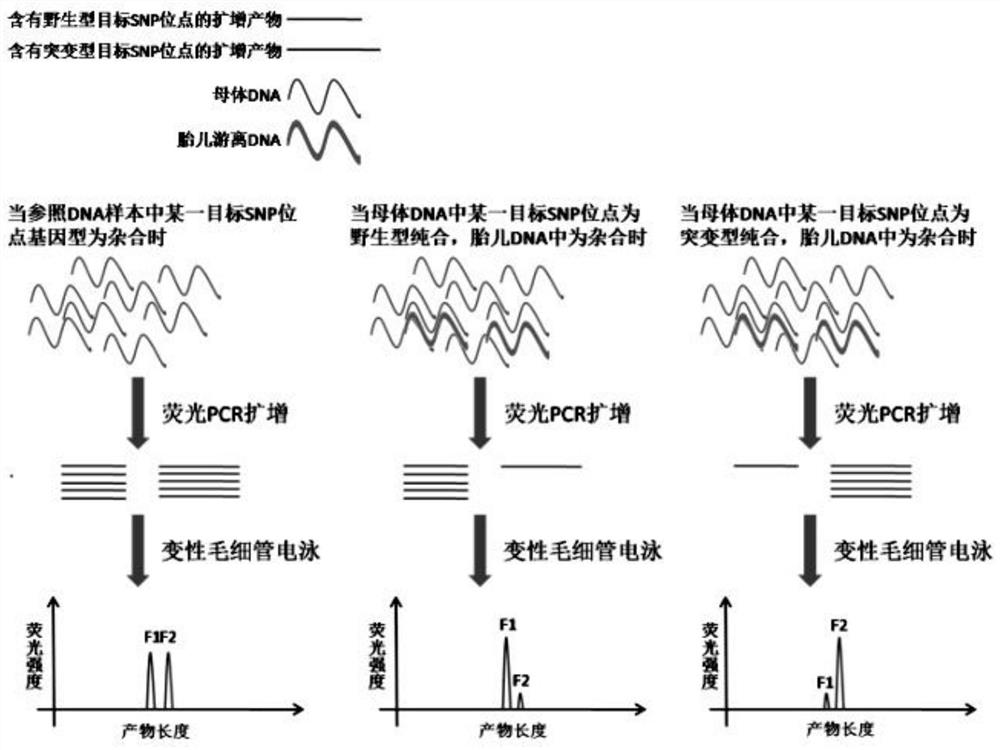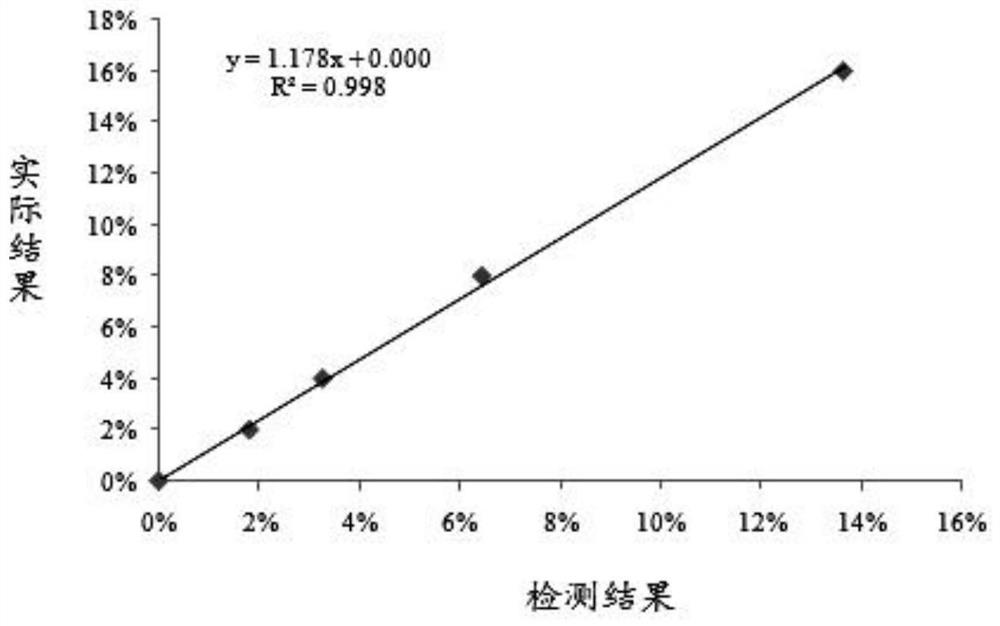A method for detecting fetal dna content in plasma of pregnant women
A detection method and fetal technology, applied in the field of life sciences, can solve the problems of high cost, complicated operation, and long time consumption
- Summary
- Abstract
- Description
- Claims
- Application Information
AI Technical Summary
Problems solved by technology
Method used
Image
Examples
Embodiment Construction
[0062] The present invention will be described in detail below with reference to the accompanying drawings, tables and examples.
[0063] see figure 1 as shown, figure 1 The overall principle of measuring the fetal free DNA ratio of the present invention is described.
[0064] The embodiment of the present invention selects 42 high-frequency insertion / deletion SNP sites in the population, and adds an Amelo sex identification site to detect whether there is a Y chromosome (male fetus) in the plasma of pregnant women. The target SNP site information, PCR amplification length, final product length, capillary electrophoresis position and fluorescent labels of all products are shown in Table 1.
[0065] In addition, 24 normal human genomic DNA reference samples were selected to calculate the peak height correction value k of the site; the forward primer sequence used in the first round of PCR reaction in this embodiment is shown in SEQ ID NO.: 1 to For SEQ ID NO.:43, the reverse...
PUM
 Login to View More
Login to View More Abstract
Description
Claims
Application Information
 Login to View More
Login to View More - R&D
- Intellectual Property
- Life Sciences
- Materials
- Tech Scout
- Unparalleled Data Quality
- Higher Quality Content
- 60% Fewer Hallucinations
Browse by: Latest US Patents, China's latest patents, Technical Efficacy Thesaurus, Application Domain, Technology Topic, Popular Technical Reports.
© 2025 PatSnap. All rights reserved.Legal|Privacy policy|Modern Slavery Act Transparency Statement|Sitemap|About US| Contact US: help@patsnap.com



